Briefing binder created for the Deputy Minister of Finance on the occasion of his appearance before the House of Commons Standing Committee on Public Accounts on November 22, 2022 on the study: Public Accounts of Canada 2022
Table of Contents
Issue Notes
Variance vs. Budget 2022
Inflation – Impact on Financial Statements
Canada Health Transfer – Request from Provinces
Public Debt Charges
Pollution Pricing Framework and Climate Action Incentive
Trans Mountain Expansion
CMHC Mortgage Insurance Limits
Fiscal Impact of Quantitative Easing
Background
Committee Member Bios (Prepared by Treasury Board Secretariat)
Meeting Background and Scenario
House of Commons Standing Committee on Public Accounts (PACP)
Department of Finance Appearance on the Public Accounts of Canada 2022
November 18, 2022 – 1 pm to 3 pm
November 22, 2022 – 3:30 to 5:30 pm
Committee Mandate and Study of the Public Accounts of Canada
- Studying and reporting to the House on the Public Accounts of Canada (the government’s consolidated financial statements) is a core part of PACP’s mandate as provided by the Standing Orders of the House of Commons. The other is studying and reporting on reports of the Auditor General of Canada, which the committee spends most of its time on over the course of a Parliament.
- For its study on the Public Accounts the committee typically holds three meetings:
- An in-camera “training” session to educate members about the technical aspects of the Public Accounts including how they are prepared and presented. This year, that meeting took place on Tuesday, November 15, 2022, with the Canadian Audit and Accountability Foundation.
Public meetings with the Auditor General, Comptroller General, and Deputy Minister of Finance. This will occur on November 18 and 22, 2022, to consider the 2022 Public Accounts.
Typically, members use this meeting to ask questions about that year’s public accounts. Many of the questions focus on any issues or areas for improvement noted in the Auditor General’s independent auditor’s opinion of the consolidated financial statements. Members may also take the opportunity to ask officials questions about other matters within their department’s mandate.
One or more meetings to develop a report to the House of Commons on their study.
The committee’s reports have typically provided an average one to four recommendations for improvements in administrative and financial practices and controls of federal departments and agencies. Usually, the committee requests a government response to its report, which is approved via a memorandum to Cabinet, and must be tabled within 120 days.
- According to the committee’s website, “Government policy, and the extent to which policy objectives are achieved, are generally not examined by PACP. Instead, the Committee focuses on government administration – the economy and efficiency of program delivery as well as the adherence to government policies, directives and standards. The Committee seeks to hold the government to account for effective public administration and due regard for public funds.”
Role of Department and Deputy Minister of Finance in Preparing the Public Accounts
- As one of the four signatories of the government’s consolidated financial statements in the Public Accounts, the Deputy Minister of Finance, along with the Comptroller General of Canada, the Secretary of the Treasury Board of Canada, and the Deputy Receiver General for Canada, are responsible for the preparation and fair presentation of the financial statements in accordance the government’s accounting policies, which are based on Canadian Public Sector Accounting Standards.
- From a production perspective, the Department of Finance is responsible for the preparation of the financial statements discussion and analysis included in Section 1, Volume I, of the Public Accounts.
- The Deputy Minister of Finance is also responsible for the proper recording and reporting of financial information pertaining to the Department of Finance included in the Public Accounts (e.g., public debt charges, major transfers to other levels of government, unmatured debt, and foreign exchange accounts).
November 18 and 22 Meetings: Questions and Answers
- All questions and answers are addressed to the Chair.
- *redacted*
- PACP members ask questions of any witnesses they choose in rotating rounds. The first round provides six minutes for questions and answers to each party (i.e., beginning with Conservatives). For all subsequent rounds, the Liberals and Conservatives receive five minutes, while the Bloc Québécois and New Democratic Party receive two and a half minutes, until the meeting time is exhausted.
- Generally, the Comptroller General is responsible for responding to questions related to accounting matters.
- Finance officials are often asked about the variance between forecast and actual results, as well as the economic and fiscal position of the government, including projections included in the Budget. The briefing binder provided to you focusses on these issues, and a select few others on Finance issues of importance to opposition members.
- Committee members may ask questions related to their report on the Public Accounts 2021, which they presented on October 20, 2022, and for which a government response was requested. Under House rules, the response, which will be led by Treasury Board Secretariat, is due to be tabled in February 2023, *redacted*. The report’s recommendations call for:
- Transparency mechanisms when changes are made to the Public Accounts after they have been audited, and before they are tabled;
- The deadline to table the Public Accounts be moved to October 15 from December 31;
- Crown corporations to divulge all expenditures in the same manner as federal departments and agencies.
- The Conservative Party of Canada’s supplementary opinion appended to the report, which does not require a formal response under the rules, includes recommendations related to pollution pricing including that the Parliamentary Budget Officer report on its revenue neutrality and impacts on inflation (see Tab 6 for more information).
- While the Committee Chair is normally expected to keep questions focused on the topic of the meeting, Public Accounts 2022, he may exercise considerable discretion in allowing a wider range of questions. For example, Finance officials may be asked questions about specific items in the Fall Economic Statement considering its recent tabling.
- Should Finance officials be unable to answer a question, they may commit to providing a written response following the meeting. Parliamentary Affairs will coordinate the preparation of any responses.
- Questions may also be posed about individual departmental line items. However, unless a general answer can be provided, officials will normally defer these detailed questions to the responsible department or agency.
Forecast variance for 2021-22
Issue
The government recorded a deficit of $90.2 billion in 2021-22, an improvement of $23.6 billion relative to Budget 2022.
The year-over-year improvement in the budgetary balance reflects the strong recovery of the Canadian economy from the effects of the pandemic as nominal GDP (the broadest measure of the tax base) was higher than expected reflecting, in particular, the impact of rising commodity prices.
Background
The $90.2-billion deficit recorded in 2021-22 was $23.6 billion lower than the $113.8‑billion deficit projected in the April 2022 federal budget.
- Overall, revenues were $18.9 billion higher than forecast primarily due to higher tax revenues driven by an economic recovery that exceeded expectations. This reflected in particular significant improvement in corporate financial performance, as well as greater employment and wage growth.
- Program expenses, excluding net actuarial losses, were $4.1 billion lower than expected, largely a result of lower-than-anticipated spending on COVID-19-related programs, including COVID-19 income supports for businesses, such as the Hardest-Hit Business Recovery Program, and COVID-19 income supports for workers.
- Public debt charges were $0.4 billion lower than projected, primarily due to a lower-than-expected stock of interest-bearing debt.
- Net actuarial losses were $0.2 billion lower than projected.
Impact of Inflation on Financial Statements
Issue
Price inflation results in both higher revenues and expenses. With respect to revenues, higher prices for Canadian produced goods and services leads to higher incomes, which in turn fuel higher tax revenues. The personal income tax system is indexed to inflation, however, meaning that tax brackets and credits rise with CPI inflation. This indexation is meant to ensure that Canadians only pay additional taxes on real income gains.
The government’s expenses also rise with inflation as many benefits are indexed to CPI, including elderly benefits and the Canada Child Benefit. In addition, the Canada Health Transfer and Equalization are indexed to nominal GDP growth, which is also affected by GDP inflation.
Based on Department of Finance sensitivity analysis, a one percentage point increase in nominal GDP inflation would mean about $2 billion annually, on average, in additional net revenue (i.e. increase in revenues less the increase in expenses) over the medium term – all else equal. That said, this analysis has important caveats:
- It does not take into account that higher inflation leads to higher interest rates – which lead to higher public debt charges for the government.
- The more inflation is sustained, the costs of goods and services will also rise for the government, meaning higher costs for providing services and benefits to Canadians – this is not fully reflected in the above analysis.
Background
GDP inflation refers to an increase in the price of all goods and services that are produced in Canada (net of import price increases). When the price of goods and services Canada produces rises, after accounting for import prices, Canada’s national income rises – and the federal government will see an increase in its income tax revenues. National income is composed of business income (i.e. corporate profits) and personal income (i.e. wages and salaries and investment and other income).
The federal government derives about 70% of its revenues from income taxes – so boosts to national income have a significant impact on federal revenues – the same can be said for provinces. The largest sources of revenue for the federal government are those stemming from personal income taxes (48%) and corporate income taxes (19%).
Consumer Price Index (CPI) inflation refers to an increase in the price of goods and services consumed by Canadians. An increase in the CPI erodes the purchasing power of Canadians, in particular if their incomes are not growing as fast as CPI. Many individual Canadians have not seen their incomes rise as fast as CPI inflation – *redacted*. This is why the government has announced its Affordability Plan, which targets support to those individuals who need the greatest help with coping with CPI inflation.
In addition, many of the government’s transfer programs are indexed, in order to protect Canadians from the negative consequences from inflation. Notably:
- Elderly benefits: Payments are indexed quarterly for CPI increases. Payments do not decrease if CPI decreases.
- Canada Health Transfer: Grows in line with a three-year moving average of nominal GDP (the projection for that fiscal year as determined by the Minister of Finance no later than 3 months before the start of the fiscal year, and the previous 2 years). Funding is guaranteed to increase by at least 3 per cent per year.
- Equalization: Grows in line with a three-year moving average of nominal GDP (current year forecast, and previous 2 years).
- Personal income tax refundable tax credits, e.g. Canada Child Benefit and Canada Workers Benefit: Inflation protected with a one-year lag. Payments are calculated based on CPI inflation adjusted net family incomes from the previous year. For example, payments for benefit year 2022-23, which began in July, will be based on incomes and inflation between October 2020 and September 2021. With respect to the indexation of the income tax system, the recent acceleration in inflation will be reflected July 2023, when benefits will rise by 6.3%. Income tax brackets for the 2023 tax year will also be indexed by this amount.
Canada Health Transfer
Issue
Since September 2020, provincial and territorial premiers have been seeking an increase to the Canada Health Transfer to cover 35 per cent of their health expenditures and maintain it at this level.
Background
Discussions with provinces and territories
- At the November 7-8, 2022, meeting of Health Ministers, the federal Minister of Health confirmed that the Government is ready to increase health care investments through the Canada Health Transfer, if provinces and territories are prepared to commit to a meaningful expansion in the sharing and use of common key health indicators and to build a world-class health data system for Canada. Additionally, Minister Duclos noted that the Government is ready to invest in targeted funding through bilateral agreements to improve health care.
- During the meeting, provincial-territorial ministers declined to endorse a pan‑Canadian health human resources action plan and a pan-Canadian health data strategy. Premiers also issued a statement that no progress has been made with the federal government, continuing their demand to increase the Canada Health Transfer. Quebec has rejected having any strings attached to new federal funding.
Canada Health Transfer
- Since 2004, the Canada Health Transfer, on average, has covered 33 per cent of provincial and territorial health expenditures when accounting for the federal tax point transfer.
- The Canada Health Transfer grows at the rate of nominal GDP growth (calculated as a three-year moving average), or 3 per cent, whichever is greater. Over the next five years, the Canada Health Transfer is projected to provide provinces and territories with $18.1 billion more compared to the pre‑pandemic growth track, growing on average 5.4%.
- Eight out of every ten dollars invested to fight COVID-19 and support Canadians has come from the federal government. This includes $6.5 billion in additional Canada Health Transfer payments to support provinces and territories.
- The Government wants to ensure that any additional federal funding will improve Canada’s health care system. Any conversation between the federal government and the provinces and territories will focus on delivering better health care outcomes for Canadians.
Public Debt Charges
Issue
After reaching historic lows as a per cent of GDP in 2020-21, public debt charges increased by $4.1 billion, or 20.3 per cent, in 2021-22 to reach 1.0 per cent of GDP.
- Based on the September private sector outlook for interest rates, public debt charges are projected to rise further in 2022-23 ($34.7 billion) and 2023-24 ($43.3 billion), reaching 1.5 per cent of GDP, before declining back to 1.3 per cent of GDP by the end of the forecast horizon.
- Public debt charges increased quickly on a year-over-year basis, this year and in 2023-24, reflecting the interest rate trajectories and higher inflation forecasts by private sector economists compared to Budget 2022. Both of these factors are expected to subside, beginning in 2024-25.
- Even under the downside scenario presented in the Fall Economic Statement 2022, which would see debt charges rise to 1.7 per cent of GDP in 2023-24, debt charges would remain low by historical standards—well below the peak of 6.5 per cent of GDP in the 1990s and 2.1 per cent in 2007-2008 before the financial crisis.
Background
Public Debt Charges (1990-91 to 2027-28)

| Fiscal Year | PDC ($ billions) | % of GDP | Fiscal Year | PDC ($ billions) | % of GDP | Downside | |||
|---|---|---|---|---|---|---|---|---|---|
| PDC ($b) | % GDP | ||||||||
| 1990-91 | 45.0 | 6.5 | 2009-10 | 26.6 | 1.7 | ||||
| 1991-92 | 43.9 | 6.3 | 2010-11 | 28.6 | 1.7 | ||||
| 1992-93 | 41.3 | 5.8 | 2011-12 | 29.0 | 1.6 | ||||
| 1993-94 | 40.1 | 5.4 | 2012-13 | 25.5 | 1.4 | ||||
| 1994-95 | 44.2 | 5.6 | 2013-14 | 24.7 | 1.3 | ||||
| 1995-96 | 49.4 | 5.9 | 2014-15 | 24.2 | 1.2 | ||||
| 1996-97 | 47.3 | 5.5 | 2015-16 | 21.8 | 1.1 | ||||
| 1997-98 | 43.1 | 4.8 | 2016-17 | 21.2 | 1.0 | ||||
| 1998-99 | 43.3 | 4.6 | 2017-18 | 21.9 | 1.0 | ||||
| 1999-00 | 43.4 | 4.3 | 2018-19 | 23.3 | 1.0 | ||||
| 2000-01 | 43.9 | 4.0 | 2019-20 | 24.4 | 1.1 | ||||
| 2001-02 | 39.7 | 3.5 | 2020-21 | 20.4 | 0.9 | ||||
| 2002-03 | 37.3 | 3.1 | 2021-22 | 24.5 | 1.0 | ||||
| 2003-04 | 35.8 | 2.9 | 2022-23 | 34.7 | 1.2 | 36.0 | 1.3 | ||
| 2004-05 | 34.1 | 2.6 | 2023-24 | 43.3 | 1.5 | 48.0 | 1.7 | ||
| 2005-06 | 33.8 | 2.4 | 2023-24 | 42.7 | 1.4 | 48.0 | 1.6 | ||
| 2006-07 | 33.9 | 2.3 | 2024-25 | 42.9 | 1.4 | 49.9 | 1.6 | ||
| 2007-08 | 33.3 | 2.1 | 2026-27 | 44.1 | 1.4 | 52.4 | 1.6 | ||
| 2008-09 | 28.3 | 1.7 | 2027-28 | 44.8 | 1.3 | 52.0 | 1.6 | ||
| Please note that due to a transcription error, the years 2024-25 and 2025-26 were mislabelled. Source: Fiscal Reference Tables, Department of Finance Canada Calculations |
|||||||||
| 2022 | 2023 | 2024 | 2025 | 2026 | 2027 | 2022-2026 | |
|---|---|---|---|---|---|---|---|
| 3-month treasury bill rate | |||||||
| Budget 2022 | 0.8 | 1.7 | 2.0 | 2.1 | 2.1 | - | 1.7 |
| 2022 Fall Economic Statement | 2.2 | 3.6 | 2.8 | 2.3 | 2.1 | 2.1 | 2.6 |
| Downside Scenario | 2.4 | 4.4 | 3.5 | 3.2 | 3.0 | 3.0 | 3.3 |
| 10-year government bond rate | |||||||
| Budget 2022 | 2.0 | 2.4 | 2.6 | 2.8 | 3.0 | - | 2.6 |
| 2022 Fall Economic Statement | 2.8 | 3.1 | 2.8 | 2.8 | 2.9 | 3.0 | 2.9 |
| Downside Scenario | 2.8 | 3.2 | 3.1 | 3.2 | 3.3 | 3.5 | 3.1 |
| Consumer Price Index Inflation | |||||||
| Budget 2022 | 3.9 | 2.4 | 2.2 | 2.1 | 2.0 | - | 2.5 |
| 2022 Fall Economic Statement | 6.8 | 3.5 | 2.1 | 2.1 | 2.1 | 2.1 | 3.3 |
| Downside Scenario | 6.8 | 5.3 | 2.5 | 1.6 | 2.0 | 2.1 | 3.7 |
Pollution Pricing Framework and Climate Action Incentive
Issue
The federal government must return all direct proceeds from the federal carbon pollution pricing system within the jurisdiction where they were collected. However, in the Public Accounts, the proceeds collected and the proceeds returned from the federal system are not equal in any given fiscal year.
Additionally, the Conservative Party tabled a dissenting report on the committee’s 2021 public accounts report, indicating that the Public Accounts 2021 “showed that $100 million of the carbon tax was diverted to spending programs and not returned to Canadians” and recommended “that the PBO present an independent and true analysis of the carbon tax, its effect on inflation and the GDP and the claim of revenue neutrality”.
Background
In jurisdictions that request the federal system – Prince Edward Island (OBPS only), Yukon and Nunavut – proceeds are returned directly to the the government.
In other jurisdictions where the backstop is imposed (currently Ontario, Manitoba, Saskatchewan and Alberta), the bulk of fuel charge proceeds (about 90 per cent) is returned directly to households through Climate Action Incentive (CAI) payments. The remaining fuel charge proceeds (about 10 per cent) are returned to certain sectors in these PTs through other federal mechanisms, including programming. Proceeds from the federal OBPS in these jurisdictions are returned via federal programing.
Generally, proceeds collected and proceeds returned within a fiscal year under the above mechanisms will not match in the Public Accounts, on an annual basis. This is entirely due to timing considerations.
- Both total fuel charge proceeds and the amounts returned via CAI payment amounts and the farmers tax credit are determined in advance of a given fuel charge year and are based on projections. Once actual returns and proceeds have been assessed, there may be an over- or under-transfer of fuel charge proceeds in a given jurisdiction. These over- or under-disbursments are corrected by adjusting the CAI payment amounts in future years.
- Fuel charge amounts in respect of a given year to be returned through federal programming are usually returned over multiple years due to program administration considerations. There is also a backlog of unallocated funding as new programs are being stood up.
In the 2022 Public Accounts, the amount of proceeds returned decreased, and was significantly lower than the amount of proceeds received. This decrease almost entirely reflects the change in the delivery of CAI payments, from an annual refundable credit on personal income tax returns to a quarterly benefit.
- Under the annual refundable credit, a portion of CAI payments for the fuel charge one year ahead were made before the start of that fuel charge year due to tax filings occurring in February and March.
- Under the quarterly benefit system, all CAI payments are made within their respective fuel charge year.
- Due to the switch to the new delivery method, CAI payments that would have been claimed in February and March of 2022 did not occur (which significantly lowered CAI payments recorded in 2021-22). All CAI payments with respect to the 2022-23 fuel charge year will occur within that period.
Note that the government also reports the source and disposition of carbon pricing proceeds in the annual GGPPA Report (the last report, covering the 2020-21 fuel charge year, was tabled in the House of Commons in March 2022). These figures will always differ from the Public Accounts data presented below. This is because the GGPPA Report presents proceeds and disbursments in respect of the fiscal year to which they pertain. In contrast, the Public Accounts attributes these amounts to the fiscal year in which they were assessed.
| 2018-19 | 2019-20 | 2020-21 | 2021-22 | |
|---|---|---|---|---|
| Carbon price | NA | $20/tCO2e | $30/tCO2e | $40/tCO2e |
| Total proceeds collected | - | 2,655 | 4,380 | 6,341 |
| Of which Fuel charge proceeds |
- | 2,655 | 4,219 | 6,106 |
Excess emissions charges from the OBPS |
- | - | 161 | 235 |
| Total proceeds returned | 664 | 2,636 | 4,566 | 3,814 |
| Of which Transfers to ‘voluntary’ backstop jurisdictions |
- | 6 | 19 | 52 |
Total CAI payments |
664 | 2,630 | 4,547 | 3,762 |
Proceeds return via federal programming |
- | 7 | 98 | No information in 2021-22 Public Accounts. |
Trans Mountain Expansion
Issue
The Government of Canada has provided financing in support of the Trans Mountain Expansion Project (the Project).
Background
In 2017, Kinder Morgan published a cost estimate of $7.4 billion that did not include a detailed engineering assessment or all of the detailed work plans. In August 2018, the Government of Canada purchased the Trans Mountain Pipeline (TMP), the Trans Mountain Expansion Project (TMEP) and related assets for $4.4 billion.
In 2020, TMC revised the cost estimate to $12.6 billion to reflect improvements to the Project as well as the approximately one-year delay due to the Federal Court of Appeal’s 2018 decision to quash the Project’s original certificate.
In 2021-22, the Government of Canada provided $6.3 billion in financing to the Canada Development Investment Corporation from the Canada Account to finance construction activities for the Trans Mountain Expansion Project.
As announced on February 18, 2022, the revised cost estimate of $21.4 billion and in-service date of late 2023 provides a more comprehensive accounting of additional Project enhancements as well as schedule pressures including delays arising from COVID, BC floods and other factors, cost overruns, safety enhancements, and financing costs.
The government announced in February 2022 that it will no longer provide public money to the Trans Mountain Expansion Project going forward. Instead, the Trans Mountain Corporation (TMC) will finance the Project using public capital markets and financial institutions.
With more than 65 per cent of the Project built and significantly de-risked, there is no longer a need for the government to be financing the Project going forward.
The acquisition of TMC and the construction of the Project up until 2022 was funded with loans from the Government of Canada, via the Canada Account. The Canada Account is used to support export transactions which are determined by the Minister for International Trade to be in Canada's national interest.
In April 2022, Trans Mountain Corporation entered into a $10-billion loan facility with a syndicate of lenders, with a guarantee provided by the government.
Bridge financing provided through the Canada Account between the February 18 announcement and the April 2022 closing of the third-party loan facility was repaid using the syndicated bank facility.
On April 28, TMC became a non-agent Crown corporation. This allowed it to seek financing from capital markets. TMC remains a wholly owned subsidiary of CDEV, and its reporting relationship to CDEV remains unchanged.
Indigenous Economic Participation
Since 2019, Finance Canada has been leading the Government’s engagement with Indigenous communities on the Crown consultation list for the project on economic participation in Trans Mountain.
To ensure that these Indigenous groups have sufficient financial resources to participate meaningfully in the engagement process, Finance Canada is providing contribution funding to these groups through the Indigenous Participant Funding Program. Contribution funding supports costs related securing financial, legal, scientific, technical and other expertise, building internal capacity, and accessing professional services.
Finance Canada signed 71 contribution agreements with Indigenous groups and other related entities in order to support its engagement process. To date, Finance Canada has provided nearly $2.9 million in contribution funding.
129 Indigenous groups were invited to participate in an engagement process about economic participation in the Project and what that participation could look like. Over 100 Indigenous groups have participated in the engagement process. This engagement process has yielded rich and valuable feedback.
The government recently appointed a Senior Advisor to the Deputy Minister of Finance to act as the special representative for the Deputy Minister on Indigenous relations associated with the Trans Mountain pipeline project.
The government will announce the next step toward Indigenous economic participation later in 2022.
The CMHC’s Mortgage Insurance Fund
Issue
The term ‘Mortgage Insurance Fund’ in the Public Accounts refers to the government’s public mortgage insurance, provided through Canada Mortgage and Housing Corporation (CMHC). In the past, Parliamentarians have asked questions about the Government’s exposure to the housing market.
Below is an anticipated question:
Is the Mortgage Insurance Fund solvent?
- An Actuarial Study of the Mortgage Insurance Fund is produced every year. The most recent independent Actuarial Report (as at Dec. 31, 2021) indicates that the financial condition is “satisfactory.”
- The commercial operations of CMHC are subject to prudential regulatory oversight by the Office of the Superintendent of Financial Institutions.
Background
- The ‘Mortgage Insurance Fund’ properly refers to the government’s public mortgage insurance, provided through CMHC. CMHC administers two funds: The Mortgage Insurance Fund ($394 billion) and the Mortgage-Backed Securities Guarantee Fund ($460 billion).
- Government-backed mortgage insurance, provided by CMHC on mortgage loans issued by lenders to borrowers, supports access to housing for first-time homebuyers and other Canadians.
- CMHC securitization administration (e.g., Canada Mortgage Bonds) provide a stable source of funding to mortgage lenders.
- The Minister of Finance sets the minimum standards for mortgage insurance. Adjustments are made as needed to support the stability of the housing market and financial system. These standards include minimum down payment requirements and a minimum qualifying rate.
- The Minister of Finance approves the terms and conditions of CMHC’s securitization programs.
- The Government also guarantees the contracts of private mortgage insurers to help provide choice to lenders and facilitate competition in the market place.
- Private mortgage insurer capital provides a buffer in the event of mortgage defaults before any cost to the government via its guarantee. They also pay the Government of Canada for the guarantee ($38 million in respect of 2020). These funds go into the Consolidated Revenue Fund and help to fund government programs.
- The Office of the Superintendent of Financial Institutions (OSFI) oversees the risk management practices of these financial institutions, including capital. OSFI sets capital requirements for mortgage insurers to ensure they have adequate resources to reduce the risk of insolvency.
- There are legislated limits on the dollar amount of CMHC-insured mortgage loans ($750 billion) and privately insured mortgage loans ($350 billion). These limits are in place to provide Parliament with oversight of taxpayer exposure to the housing finance system.
As at March 31, 2022 |
CMHC (Volume 1 – Table 11.8) (pg. 394, English) (pg. 406, French) |
Private mortgage insurers (Volume 1 – Table 11.6) (pg. 389, English) (pg. 401, French) |
Total |
|---|---|---|---|
| Legislative limit | 750 | 350 | 1,100 |
| Insurance-in-force | 394 | 258 | 652 |
|
N.B. CMHC legislative limit was temporarily increased to $750 billion effective March 2020 to deliver measures in response to COVID-19 but will revert to pre-COVID level of $600 billion in 2025. |
|||
Quantitative Easing - Fiscal Impact
Issue
The government recorded a net loss totalling $1 billion in 2021-22 in respect of the Bank of Canada's purchases of Government of Canada bonds on the secondary market.
Background
- The Bank of Canada launched a range of measures during the COVID-19 pandemic to keep markets functioning and credit flowing. Among these measures, the Bank introduced several large-scale asset purchase programs, including:
- Bankers’ Acceptance Purchase Facility
- Canada Mortgage Bond Purchase Program
- Corporate Bond Purchase Program
- Commercial Paper Purchase Program
- Provincial Bond Purchase Program
- Provincial Money Market Purchase Program
- Government of Canada Bond Purchase Program (GBPP), also referred to as quantitative easing
- Under these programs, the Bank purchased securities on financial markets from financial institutions. The Bank paid for these purchases by increasing financial institutions’ settlement balances, or deposits, with the Bank. Settlement balances earn interest for the financial institutions (currently at a rate of 3.75 per cent) and can be used to settle transactions with other financial institutions at the end of every day.
- These programs were discontinued as market conditions improved.
- For accounting purposes in the Public Accounts, the Bank’s purchase of Government of Canada bonds is treated as the government’s repurchase and retirement of its own debt. This is because the Bank, as a Crown corporation, is part of the government.
- When the Bank purchases Government of Canada bonds, the government records as a gain or loss the difference between the purchase price of these bonds and their value in the government’s books. In 2021-22, the purchase price of bonds acquired exceeded their book value by $1 billion. This net loss is reflected in the Public Accounts as a reduction in the Bank of Canada’s profit recorded as part of “Other revenues – Enterprise Crown corporations and other government business enterprises” on the Consolidated Statement of Operations and Accumulated Deficit.
- The net loss of $1 billion is down significantly from the net loss of $19 billion recorded in 2020-21, reflecting a decrease in the amount of bonds purchased by the Bank over the prior year and higher prevailing interest rates, which lowered the cost of bonds purchased.
- Over the period the securities are held by the Bank, the Bank will continue to record coupon interest received on the securities as revenue, and the government will continue to record the payment of this interest as part of public debt charges, with no overall impact on the budgetary balance.
Committee Member Bios
Standing Committee on Public Accounts (PACP)
Mandate of the Committee
When the Speaker tables a report by the Auditor General in the House of Commons, it is automatically referred to the Public Accounts Committee. The Committee selects the chapters of the report it wants to study and calls the Auditor General and senior public servants from the audited organizations to appear before it to respond to the Office of the Auditor General’s findings. The Committee also reviews the federal government’s consolidated financial statements – the Public Accounts of Canada – and examines financial and/or accounting shortcomings raised by the Auditor General. At the conclusion of a study, the Committee may present a report to the House of Commons that includes recommendations to the government for improvements in administrative and financial practices and controls of federal departments and agencies.
Government policy, and the extent to which policy objectives are achieved, are generally not examined by the Public Accounts Committee. Instead, the Committee focuses on government administration – the economy and efficiency of program delivery as well as the adherence to government policies, directives and standards. The Committee seeks to hold the government to account for effective public administration and due regard for public funds.
Pursuant to Standing Order 108(3) of the House of Commons, the mandate of the Standing Committee on Public Accounts is to review and report on:
- The Public Accounts of Canada
- All reports of the Auditor General of Canada
- The Office of the Auditor General’s Departmental Plan and Departmental Results Report
- Any other matter that the House of Commons shall, from time to time, refer to the Committee
The Committee also reviews:
- The federal government’s consolidated financial statements
- The Public Accounts of Canada
- Makes recommendations to the government for improvements in spending practices
- Considers the Estimates of the Office of the Auditor General
Other Responsibilities:
- The economy, efficiency and effectiveness of government administration
- The quality of administrative practices in the delivery of federal programs
- Government’s accountability to Parliament with regard to federal spending
| Name & Role | Party | Riding | PACP Member Since |
|---|---|---|---|
| Chair | |||
| John Williamson | Conservative | New Brunswick Southwest | February 2022 |
| Vice-Chair | |||
| Jean Yip | Liberal | Scarborough—Agincourt | January 2018 |
| Nathalie Sinclair-Desgagné Critic for Public Accounts; Pandemic Programs; Economic Development Agencies |
Bloc Québécois | Terrebonne | December 2021 |
| Members | |||
| Garnett Genuis Critic for International Development |
Conservative | Sherwood Park—Fort Saskatchewan | October 2022 |
| Michael Kram | Conservative | Regina—Wascana | October 2022 |
| Kelly McCauley |
Conservative | Edmonton West | October 2022 |
| Blake Desjarlais Critic for TBS; Diversity and Inclusion; Youth; Sport and PSE |
New Democratic Party | Edmonton Greisbach | December 2021 |
| Valerie Bradford | Liberal | Kitchener South – Hespeler | December 2021 |
| Han Dong | Liberal | Don Valley North | December 2021 |
| Peter Fragiskatos Parliamentary Secretary National Revenue |
Liberal | London North Centre | December 2021 |
| Brenda Shanahan | Liberal | Châteauguay—Lacolle | December 2021; and Jan 2016 – Jan 2018 |
Bios of the Committee Members
John Williamson (New Brunswick Southwest)
Conservative
Chair
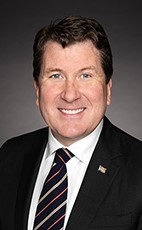
- Elected as MP for New Brunswick Southwest in 2011, he was then defeated in 2015 and re-elected in 2019 & 2021.
- Currently also serves as a Member of the Liaison Committee and Chair of the Subcommittee on Agenda and Procedure of the Standing Committee on Public Accounts
- Previously served on many committees, including PACP for a brief time in 2013
- Prior to his election, M. Williamson occupied different positions. He was an editorial writer for the National Post from 1998 to 2001, then joined the Canadian Taxpayers Federation until 2008. In 2009, he was hired by Stephen Harper as director of communications in the PMO.
Jean Yip (Scarborough - Agincourt)
Liberal
First Vice-Chair
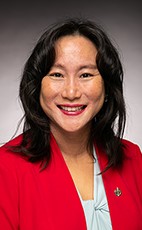
- Elected as MP for Scarborough—Agincourt in a by-election on December 11, 2017, and re-elected in 2019 & 2021.
- Has served on Public Accounts (since 2018), as well as Government Operations and Canada-China committees in the past.
- Vice-Chair of the Subcommittee on Agenda and Procedure of the Standing Committee on Public Accounts
- Before her election, Ms. Yip was an insurance underwriter and constituency assistant.
Nathalie Sinclair-Desgagné (Terrebonne)
Bloc Québécois
Second Vice-Chair

- Elected as MP for Terrebonne in the 2021 federal election.
- BQ Critic for Public Accounts; Pandemic Programs; and Federal Economic Development Agencies.
- Vice-Chair of the Subcommittee on Agenda and Procedure of the Standing Committee on Public Accounts
- Worked at the European Investment Bank and at PWC London.
- Return to Quebec in 2017 to pursue a career in the Quebec business world.
Garnett Genuis (Sherwood Park—Fort Saskatchewan)
Conservative

- Elected as MP for Sherwood Park—Fort Saskatchewan in 2015, re-elected ion 2019 and 2021
- Conservative Shadow Minister for International Development
- Also serves on the Standing Committee on Foreign Affairs and International Development
- Served on multiple standing committees in the past, including Citizenship and Immigration, Canada-China Relations and Scrutiny of Regulations
- Prior to his election, Mr. Genuis was an assistant to former Prime Minister Stephen Harper and adviser on the staff of former minister Rona Ambrose.
Michael Kram (Regina—Wascana)
Conservative
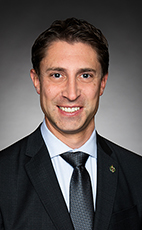
- Elected as MP for Regina—Wascana in 2019, and re-elected in 2021.
- Served as Vice-Chair of the Standing Committee on Industry and Technology, as well as a Member of the standing committees on Transpart, Infrastration and Communities and International Trade
- Prior to his election, Mr. Kram worked for 20 years in the information technology sector, including a number of contract positions with the Department of National Defence.
Kelly McCauley (Edmonton-West)
Conservative
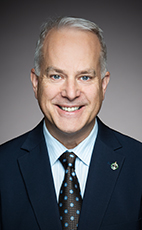
- Elected as the Member of Parliament in 2015 for Edmonton West, re-elected in 2019 and 2021
- Also serves as Chair of the Standing Committee on Government Operations and Estimates
- Former Conservative Shadow Minister for Treasury Board
- Previously served on the COVID-19 Pandemic committee as well as the Subcomittee on Agenda and Procedure of OGGO in 2020
- Before his election in 2015, Mr. McCauley was a hospitality executive specialized in managing hotels and convention centres
- He has a graduate of BCIT in the Hospitality Management program
- He has a history of advocacy for seniors and veterans
Blake Desjarlais (Edmonton Greisbach)
NDP

- Elected as MP for Edmonton Greisbach in 2021.
- NDP Critic for Treasury Board; Diversity and Inclusion; Youth; Sport; and Post-secondary Education.
- Also a member of the Subcommittee on Agenda and Procedure of the Standing Committee on Public Accounts
- First openly Two-Spirit person to be an MP, and Alberta’s only Indigenous Member of Parliament.
Valerie Bradford (Kitchener South – Hespeler)
Liberal

- Elected as MP for Kitchener South – Hespeler in 2021.
- Also sits on the Science and Research committee and the Subcommittee on Agenda and Procedure of the Standing Committee on Science and Research
- Director of the Canada-Africa Association
- Prior to her election, Ms. Bradford worked as an economic development professional for the City of Kitchener.
Han Dong (Don Valley North)
Liberal
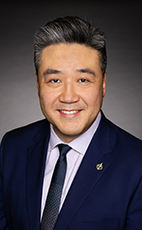
- Elected as MP for Don Valley North in 2019, and re-elected in 2021.
- Also sits on the Industry and Technology committee.
- Has served on the Ethics, and Human Resources committees in the past.
- Co-Chair of the Canada-China Legislative Association
- Prior to his election, Mr. Dong worked with Toronto-based high-tech company dedicated to building safer communities and served as the leader of the Chinatown Gateway Committee established by Mayor John Tory.
Peter Fragiskatos (London North Centre)
Liberal
Parliamentary Secretary to the Minister of National Revenue
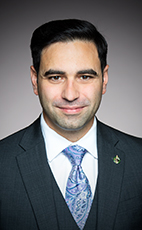
- Elected as MP for London North Centre in 2015, and re-elected in 2019 & 2021.
- Serves as Parliamentary Secretary to the Minister of National Revenue.
- Has served on the Finance, Canada-China, Human Resources, Public Safety, and Foreign Affairs committees in the past.
- Served as a member of the National Security and Intelligence Committee of Parliamentarians (NSICOP).
- Prior to his election, Mr. Fragiskatos was a political science professor at Huron University College and King’s University College, as well as a frequent media commentator on international issues.
Brenda Shanahan (Châteauguay—Lacolle)
Liberal

- Elected as MP for Châteauguay—Lacolle in 2015, and re-elected in 2019 & 2021.
- Caucus Chair of the Liberal Party
- Has served on Public Accounts (2016-2018), as well as Ethics, Government Operations, and MAID committees in the past.
- Has served as a member of the National Security and Intelligence Committee of Parliamentarians (NSICOP).
- Prior to her election, Ms. Shanahan was a banker and social worker, who has also been involved in a number of organizations such as Amnesty International and the Canadian Federation of University Women.